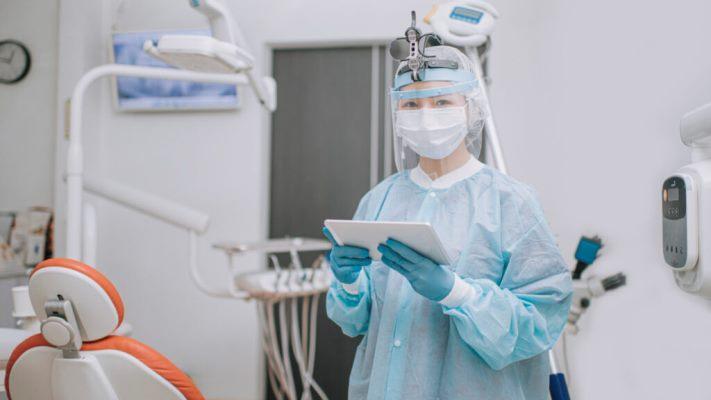Lithuanian researchers recently developed three pieces of equipment that provide access to oral care during virus outbreaks, protecting dentists.

The COVID-19 outbreak has significantly affected the work of dentists. For this reason, Lithuanian researchers have recently developed protection products that reduce the risk of dentists being exposed to viruses such as SARS-CoV-2 during healthcare. They hope this will avoid the restrictions on access to dental care that patients have experienced during the pandemic.
The equipment, consisting of an air purifier, a protective screen and a water disinfection module, was created by scientists from the Kaunas University of Technology (KTU), the Lithuanian University of Medical Sciences and the Senamiesčio Dental Clinic. The devices use short-wavelength, high-intensity narrow-spectrum ultraviolet (HINS) rays to destroy the viability of various viruses. UV disinfection methods are nothing new in dentistry, but the researchers noted that most products on the market use a variety of UV-C wavelengths, and these light sources have very limited usage requirements.
“For example, quartz lamps, which are still used for disinfection of premises, complicate the work of a specialist, because people have to leave the premises during disinfection. In addition, the effectiveness of these lamps in killing viral cells decreases in a wider operating range – there should be a small distance between the germicidal lamp and the disinfected area, and the greater the distance, the longer the surface should be irradiated,” explained the project manager from the School of Economics and Business of KTU, Professor Vaidas Gaidelis.
“HINS beams are highly effective in killing SARS-CoV-2 virus cells, but they can also be used to protect against various forms of influenza or other viral cells,” he noted.
Devices
The air purifier consists of an aerosol disinfection module, which is positioned so as not to interfere with the work of the dentist, and an air suction tube, which is directed at the patient's face at a distance of 20 cm. to the secondary filter. For a certain time, this filter is illuminated by HINS beams, which destroy the viral cells,” explained Prof. Gaidelis.
The protective screen is a glass barrier module that is located between the patient and the dentist during operation. This transparent protective barrier is disinfected with ultraviolet radiation using lamps built into its frame, as particles generated during dental procedures are deposited on it.
The Water Disinfection Module uses HINS light sources to disinfect liquids collected through the saliva ejector during dental treatment. Disinfection of this fluid, which is usually drained into the public sewer system, ensures that viral cells do not enter the environment. According to Prof. Gaidelis, the module can also be integrated into existing dental systems.
